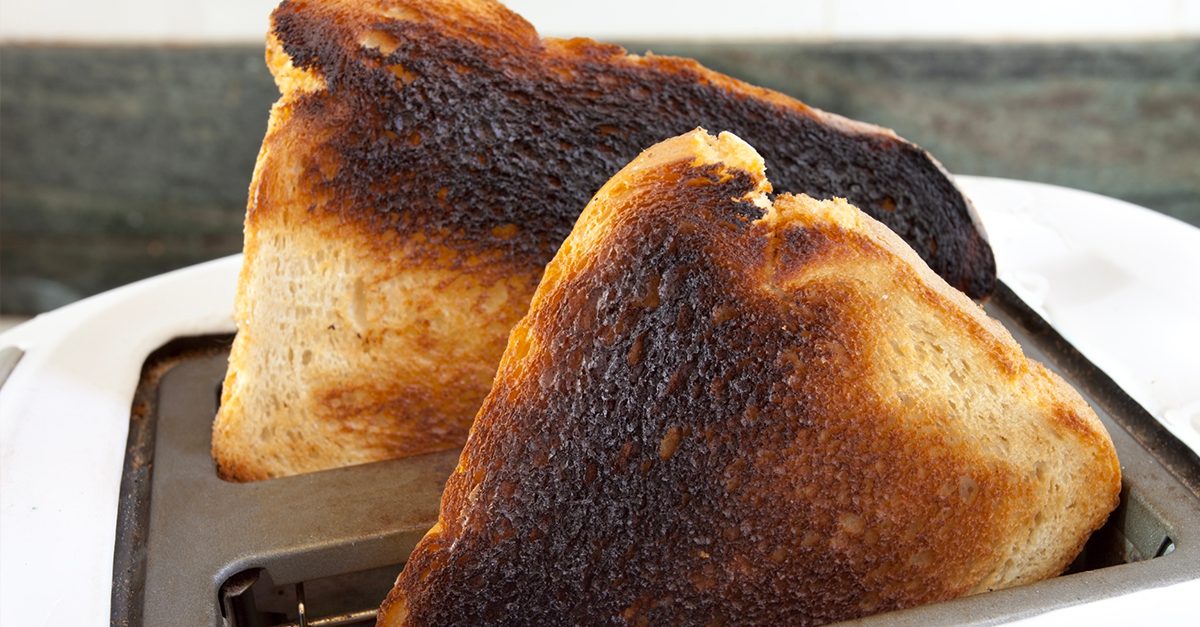Is Eating Burnt Food Safe For You?
Eating burnt food can expose you to harmful compounds like acrylamide and PAHs, linked to increased cancer risk. While burnt veggies are safer than meats, it's best to avoid burnt foods altogether. Monitor cooking temperatures, stir often, trim burnt parts, choose safer cooking methods, and marinate meats to reduce risk. Regular consumption of burnt food is unhealthy, so aim for balanced cooking.
;Resize,width=742;)
In the culinary world, achieving the perfect level of doneness is akin to an art form, but despite our best efforts, food can sometimes end up burnt. Whether it's a piece of toast that's been left in the toaster too long or a steak that's become more charred than charbroiled, it's important to understand how food gets burnt, the risks involved in consuming burnt food, and if any burnt foods are safer to eat than others. Moreover, knowing how to avoid burnt spots or foods altogether can contribute to a healthier diet.
How Does Food Get Burned?
Food burns when it's exposed to heat for too long or at too high of a temperature. This can occur through various cooking methods, including grilling, baking, frying, and roasting. When food is cooked, chemical reactions occur between amino acids and reducing sugars in the Maillard reaction, which gives browned foods their distinctive flavor. However, when the temperature is too high, this process can lead to burning, resulting in the creation of carbonized black spots and a bitter, burnt taste.

The Risks of Eating Burnt Food
The primary concern with consuming burnt food lies in the formation of potentially harmful compounds, such as acrylamide and polycyclic aromatic hydrocarbons (PAHs). Acrylamide forms in carbohydrate-rich foods cooked at high temperatures, while PAHs are produced when fat and juices from meat drip onto a fire, creating smoke that then adheres to the surface of the meat. Both compounds have been linked to an increased risk of cancer in animal studies, and although the research is still ongoing regarding their effects on humans, it's advisable to limit exposure.
Are Some Burnt Foods Safer Than Others?
Generally, burnt vegetables are considered safer than burnt meats because vegetables do not produce PAHs when charred. However, acrylamide can still form in burnt vegetables, making it important to aim for a balance between achieving a flavorful char without overcooking to the point of burning. Foods that are naturally low in sugars and amino acids may also produce less acrylamide when cooked at high temperatures.

Avoiding Burnt Spots and Burnt Foods
To minimize the risk of eating burnt food, consider the following tips:
- Use a kitchen thermometer to ensure foods are cooked at the proper temperature. Avoid cooking at excessively high temperatures whenever possible.
- When cooking on the stove, stir foods frequently to ensure even cooking and prevent burning.
- If food does end up getting burnt, trim away the blackened areas before consuming.
- Opt for cooking methods that are less likely to burn food, such as steaming or boiling, especially for carbohydrate-rich foods.
- Marinating meats can help prevent the formation of PAHs and acrylamide by creating a barrier between the meat and the heat source.
;Resize,width=767;)
;Resize,width=712;)

;Resize,width=712;)
